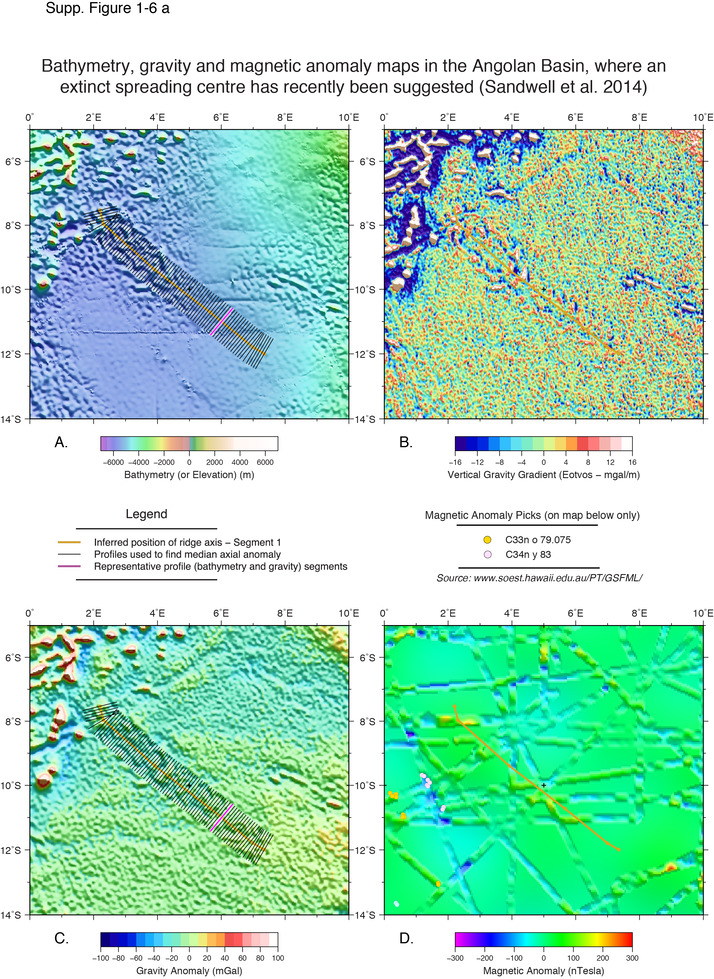| Ocean: | Atlantic |
| Spreading center type: | Large-scale MOR |
| Time of cessation: | Not discussed in published studies to date; likely to have formed during the Cretaceous Normal Superchron between 83 and 134 Ma. |
| Subsequent active spreading center: | Present-day Mid-Atlantic Ridge (MAR) |
| Cessation style: | Not constrained by available data |
| Later deformation/volcanism | No information is available |
Sandwell et al. (2014) describe a faint, linear free-air negative gravity feature that is visible in their recently published vertical gravity gradient grid, and propose that it represents an extinct ridge near the African margin. Sandwell et al. (2014) propose that the extinct ridge and an inferred pseudofault near South American margin formed during northward ridge propagation that unltimately led to westward migration of the ridge. The extinct spreading centre is orientated oblique to the present day Mid-Atlantic Ridge (MAR) and its presence requires a complex reorganization of the South Atlantic plate boundary during the later part of the Cretaceous Normal Superchron.
No information is available regarding the spreading-rate of this possible spreading ridge or pole of rotation of the spreading center, and the time of extinction is approximate due to the lack of magnetic reversals. Fracture zones about the structure are faint and offer little assistance in clarifying the direction of spreading in the vicinity of the structure.
The reason for cessation of the possible spreading center is not discussed by Sandwell et al. (2014). We observe that at the time of extinction this feature would have been relatively close to the St. Helena hotspot (within a few hundred kilometres) and after cessation, the MAR would have been situated further from the hotspot. Therefore, we suggest that the hotspot may have had a role in spreading cessation and the subsequent plate reorganization.
While the inferred axis of the spreading ridge could be identified in map view, there is limited evidence to conclusively demonstrate the presence of an extinct spreading center in the proposed location. There is no bathymetric expression of an axial valley or ridge and the gravity anomaly is subdued (ca. 10 mGals) and not readily comparable to the characteristic signal seen at well-defined extinct ridges. However, the older age of the extinct ridge would contribute to a weaker signal and we cannot rule out an extinct ridge origin for this feature.
Sandwell, D., Müller, R. D., Smith, W. H. F., Garcia, E. S., Francis, R., 2014, New global marine gravity model from CryoSat-2 and Jason-1 reveals buried tectonic structure, Science, v. 346, no. 6205, p. 65-67.


